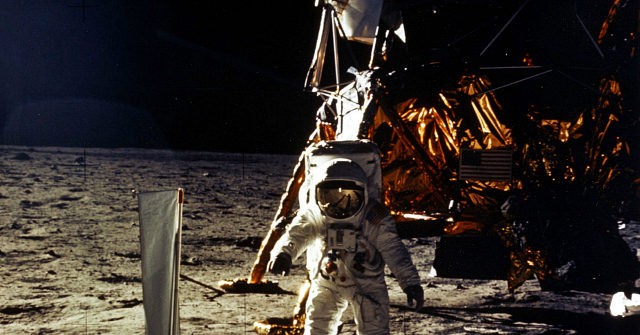PHOTO: Moon Dust Gathered by Neil Armstrong Going to Auction in NY
Lunar dust gathered by Neil Armstrong during the Apollo 11 mission is scheduled for auction and is the only specimen allowed to be sold.

The estimated value was between $800,000 and $1.2 million, Barrons reported Monday, adding the moon dust “will highlight Bonham’s sale of space exploration-related artifacts on April 13 in New York.” A photo showed the five separate specimens nestled inside a blue box with blue marker noting their numbers: Gathering the samples was one of the first things Armstrong did once he stepped onto the moon on July 21, 1969. On July 20, 1969, Armstrong, alongside Edwin “Buzz” Aldrin, became the first human beings to make landfall on the surface of the moon. Armstrong later became known as the first individual to walk on it, according to History.com: As he took his first step, Armstrong famously said, “That’s one small step for man, one giant leap for mankind.” The Apollo 11 mission occurred eight years after President John F. Kennedy (1917-1963) announced a national goal of landing a man on the moon by the end of the 1960s. Apollo 17, the final manned moon mission, took place in 1972.
The American effort to send astronauts to the moon had its origins in an appeal President Kennedy made to a special joint session of Congress on May 25, 1961: “I believe this nation should commit itself to achieving the goal, before this decade is out, of landing a man on the moon and returning him safely to Earth.” After NASA placed the dust in the Apollo 11 Contingency Sample Return Container (CSRC) Decontamination Bag, it was eventually held in a museum without a loan agreement. However, the bag was forfeited due to the museum’s former director having been imprisoned over stealing artifacts then selling them, according to the Barrons article. “Nancy Lee Carlson, a lawyer from Michigan, bought the specimen at an auction in 2015 and sent the bag to NASA for identification and testing. NASA tried to seize the property, and following a lawsuit Carlson was granted ownership of the moon relic,” the outlet continued, adding Carlson later sold the bag through Sotheby’s for $1.8 million.
Read the full article at the original website
References:
